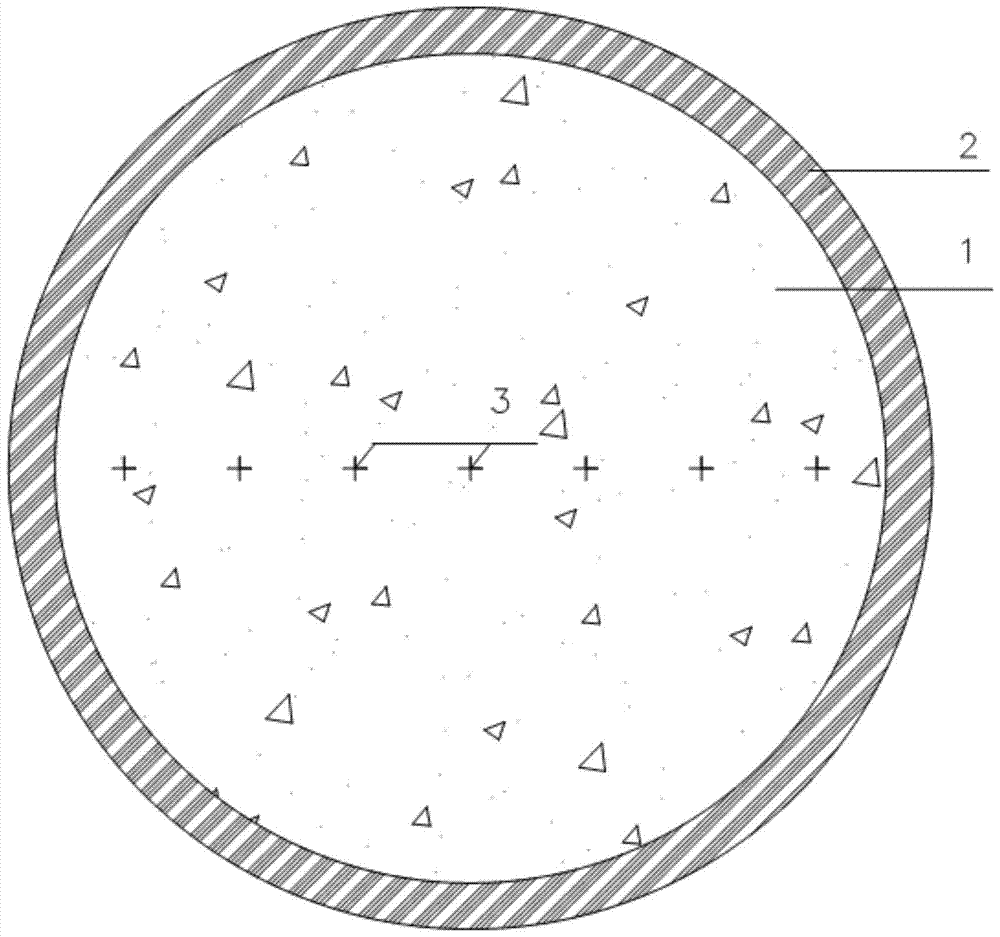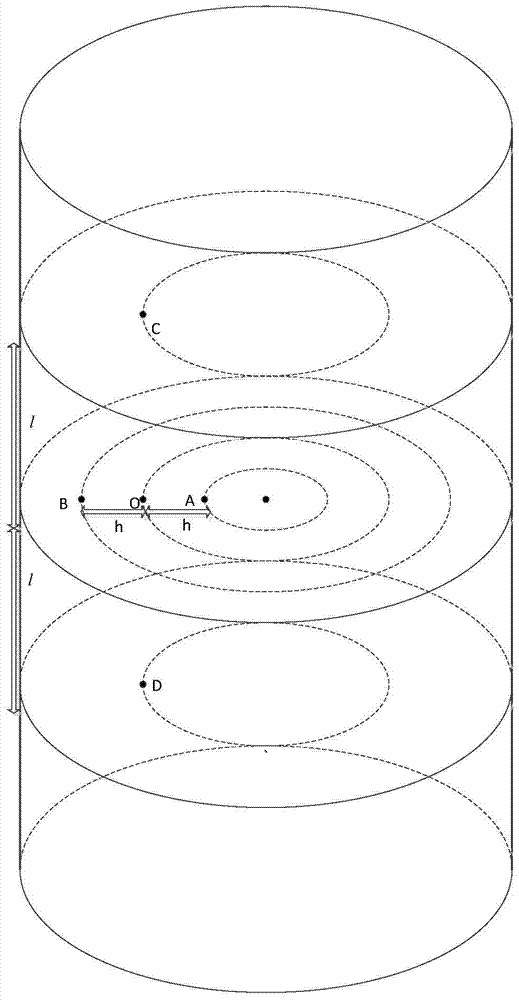A method for retrieving the adiabatic temperature rise of concrete using two-dimensional heat dissipation
A technology of adiabatic temperature rise and concrete, which is applied in the field of obtaining concrete adiabatic temperature rise, can solve the problems of low test accuracy, inability to completely prevent concrete heat dissipation, and inability to well reflect the heat release process of concrete, and achieve a simple and clear formula Effect
- Summary
- Abstract
- Description
- Claims
- Application Information
AI Technical Summary
Problems solved by technology
Method used
Image
Examples
Embodiment approach
[0028] The invention measures the temperature of concrete at different measuring points at different times by arranging temperature sensors at different positions along the radial direction on multiple cross-sections of the concrete, and then calculates the temperature field through a differential method, and uses the minimum optimization of the square sum of the difference between the measured temperature and the calculated temperature Invert the adiabatic temperature rise. The specific method can be implemented as follows:
[0029] 1) First make a cylindrical hollow mould, both sides of which are detachable for easy handling and demoulding, lay a layer of insulation material 2 on the lower part of the hollow mould, and lay insulation materials around the mould, the thickness of which is one-third of the lower insulation material to one-fifth, used to slow down the heat dissipation rate, such as figure 1 shown;
[0030] 2) Select m positions with different heights along the...
Embodiment
[0057] In a specific implementation, the inner diameter of the cylinder is 400mm and the height is 600mm. The insulation material adopts rubber and plastic sponge, 80mm of insulation material is laid on the upper and lower parts, and 20mm of insulation material is laid on the four sides. Arrange seven temperature sensors on the sections with heights of 300mm, 375mm, and 450mm respectively, one of which is arranged radially at the center of the circle, and the sensor spacing is 50mm, such as figure 2 shown. Read the temperature every 5 minutes, take the time step Δτ as 5min, the radial temperature measurement point spacing h as 50mm, and the axial temperature measurement point spacing l as 75mm.
[0058] Divide the 21 measurement positions into two groups, each group of measurement points are in the same radial direction, respectively figure 1 Sensor measuring points 4, 5, 6, 7, 11, 12, 13, 14, 18, 19, 20, 21 and 7, 8, 9, 10, 14, 15, 16, 17, 21, 22 shown , No. 23 and No. 24...
PUM
| Property | Measurement | Unit |
|---|---|---|
| diameter | aaaaa | aaaaa |
Abstract
Description
Claims
Application Information
 Login to View More
Login to View More - R&D
- Intellectual Property
- Life Sciences
- Materials
- Tech Scout
- Unparalleled Data Quality
- Higher Quality Content
- 60% Fewer Hallucinations
Browse by: Latest US Patents, China's latest patents, Technical Efficacy Thesaurus, Application Domain, Technology Topic, Popular Technical Reports.
© 2025 PatSnap. All rights reserved.Legal|Privacy policy|Modern Slavery Act Transparency Statement|Sitemap|About US| Contact US: help@patsnap.com



